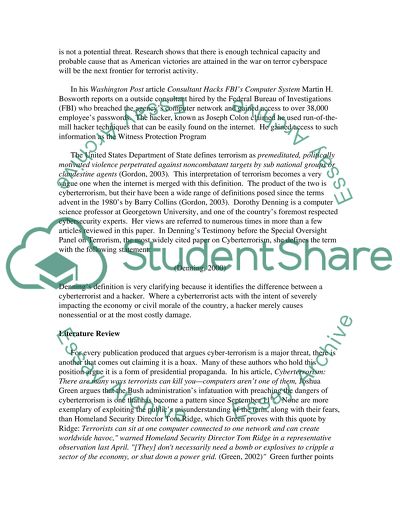Cite this document
(“Cyberterrorism - A Threat Or A Hoax Essay Example | Topics and Well Written Essays - 2000 words”, n.d.)
Cyberterrorism - A Threat Or A Hoax Essay Example | Topics and Well Written Essays - 2000 words. Retrieved from https://studentshare.org/technology/1501553-cyberterrorism-essay
Cyberterrorism - A Threat Or A Hoax Essay Example | Topics and Well Written Essays - 2000 words. Retrieved from https://studentshare.org/technology/1501553-cyberterrorism-essay
(Cyberterrorism - A Threat Or A Hoax Essay Example | Topics and Well Written Essays - 2000 Words)
Cyberterrorism - A Threat Or A Hoax Essay Example | Topics and Well Written Essays - 2000 Words. https://studentshare.org/technology/1501553-cyberterrorism-essay.
Cyberterrorism - A Threat Or A Hoax Essay Example | Topics and Well Written Essays - 2000 Words. https://studentshare.org/technology/1501553-cyberterrorism-essay.
“Cyberterrorism - A Threat Or A Hoax Essay Example | Topics and Well Written Essays - 2000 Words”, n.d. https://studentshare.org/technology/1501553-cyberterrorism-essay.


